HP EliteBook Ultra vs Apple MacBook Pro 14: which is better for business?
Which ARM laptop should you buy?
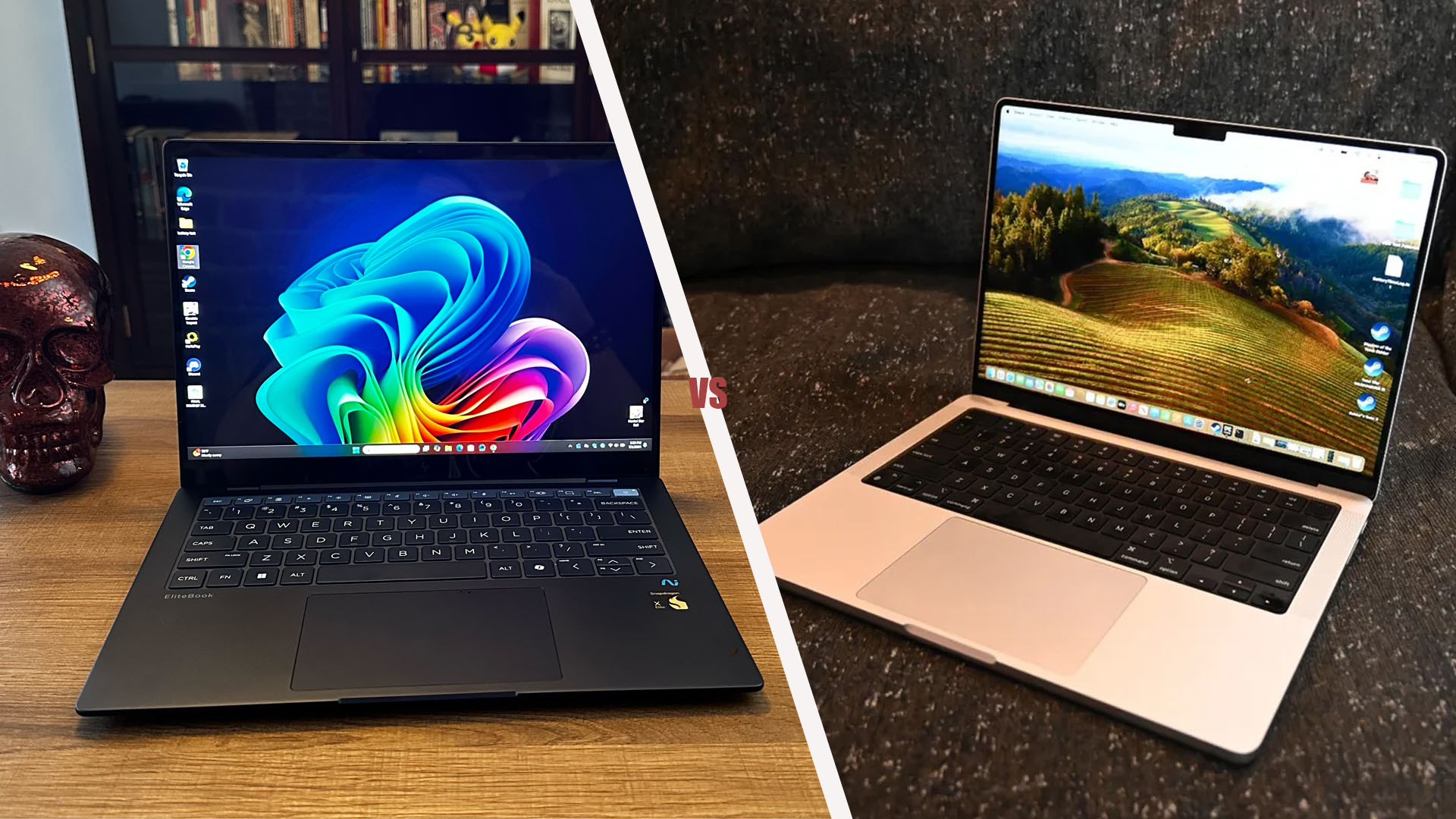
Like many new Qualcomm Snapdragon X Elite laptops, HP targeted the Apple MacBook Pro 14 as a competitor for the HP EliteBook Ultra.
Part of this is just the usual Windows vs. Mac marketing rivalry that's been ongoing since at least the old "Hi. I'm a Mac" Justin Long ads from 2006. Qualcomm called back to that old ad campaign at the end of CEO Cristiano Amon's Computex keynote speech.
However, another aspect of the Qualcomm and Mac comparisons is processor architecture. Apple's M-series processors and Qualcomm's Snapdragon X Elite and X Plus chipsets use the ARM (Advanced RISC Machine) architecture.
So, it was no surprise that the new Copilot+ PCs targeted Apple as the key competitor. Like other Copilot+ manufacturers, HP made quite a few claims about the performance of the EliteBook Ultra compared to the MacBook Pro 14 M3 and MacBook Air.
Naturally, we had to put those claims to the test to see which 14-inch fan-cooled laptop is the better choice.
HP EliteBook Ultra vs Apple MacBook Pro 14 M3: Price and configurations
The MacBook Pro 14 is technically cheaper out of the gate. It starts at $1,599, compared to the HP EliteBook Ultra's $1,699 price tag.
However, the HP comes with 16GB of RAM and 512GB of storage space. A similarly specced MacBook Pro 14 M3 would cost you $1,799. So they're both on the pricey side, but in terms of what's under the hood, the MacBook Pro is the most expensive.
Sign up to receive The Snapshot, a free special dispatch from Laptop Mag, in your inbox.
Of course, if you have specific spec needs for your laptop, the MacBook Pro 14 has multiple configuration options, including processor and graphics card updates as well as increased memory and storage.
There is currently only one spec available for the HP EliteBook, though 16GB of memory and 512GB of storage is a pretty generous setup for most people.
Winner: HP EliteBook Ultra
HP EliteBook Ultra vs Apple MacBook Pro 14 M3: Design
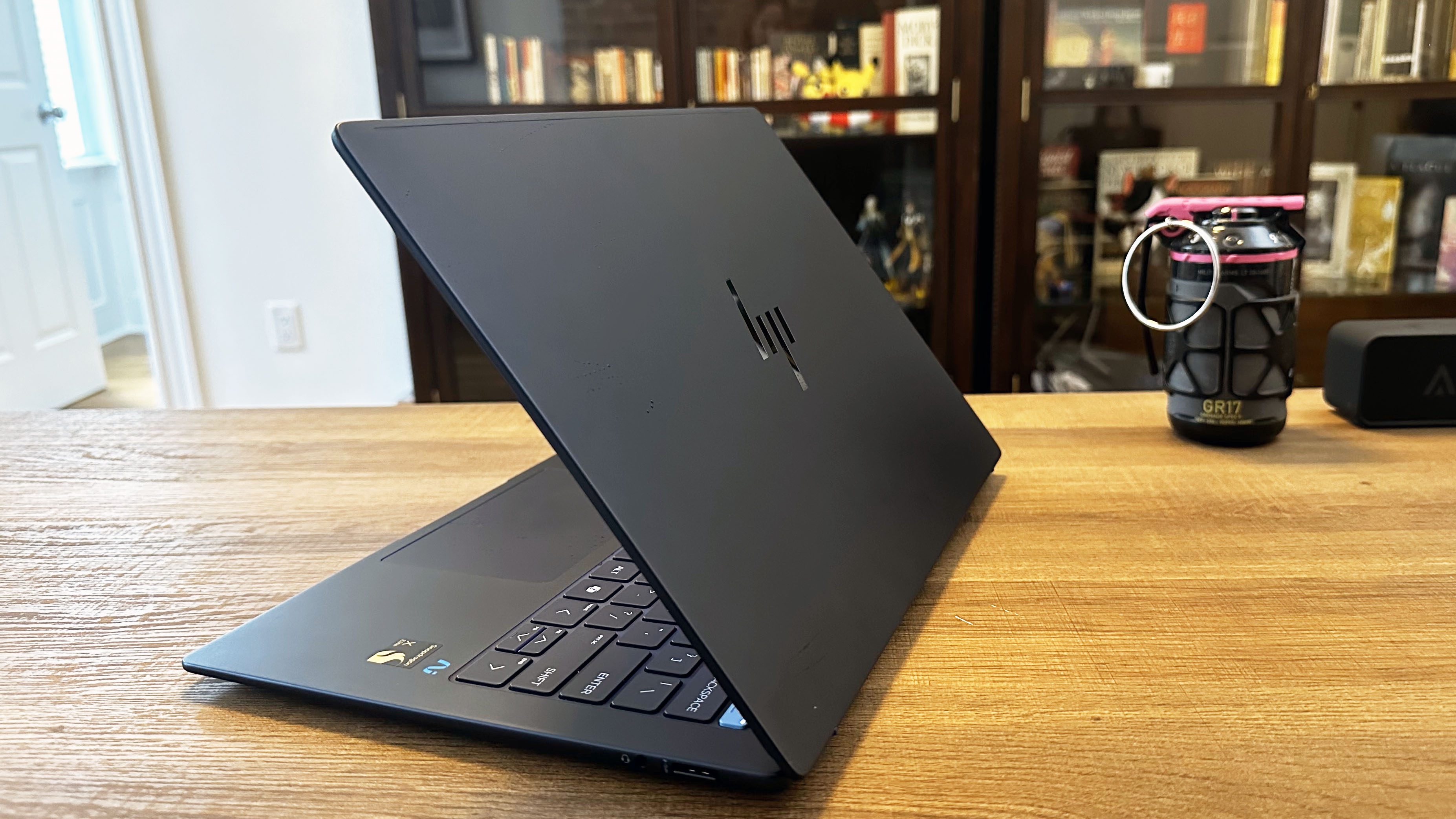
Both the Apple MacBook Pro 14 M3 and HP EliteBook Ultra are 14-inch ultra-thin clamshell laptops, but not every clamshell is the same.
The EliteBook Ultra comes in a dark Atmospheric Blue, while the MacBook Pro 14 comes in Apple's Space Gray and Silver color options. While the MacBook technically has more color choices, Space Gray and Silver are hardly exciting color options. Meanwhile, the EliteBook's dark blue colorway is understated while still having visual interest.
While the MacBook technically has more color choices, Space Gray and Silver are hardly exciting color options.
The EliteBook Ultra measures 12.31 x 8.79 x 0.44 inches which is a bit thinner than the MacBook Pro 14 M3 which measures 12.3 x 8.7 x 0.6 inches. The EliteBook Ultra is also lighter at just 2.9 pounds compared to the MacBook which weighs 3.4 pounds. These aren't massive differences, but if you want the thinnest and lightest option, the EliteBook Ultra beats the MacBook Pro on both metrics.
The only edge the MacBook Pro has when it comes to design is how iconic Apple's aluminum clamshell chassis has become. And that iconic design has had quite a bit of sway over laptop design for the last decade and change.
That said, I do appreciate the pop of color on the EliteBook Ultra.
Winner: HP EliteBook Ultra
HP EliteBook Ultra vs Apple MacBook Pro 14 M3: Display
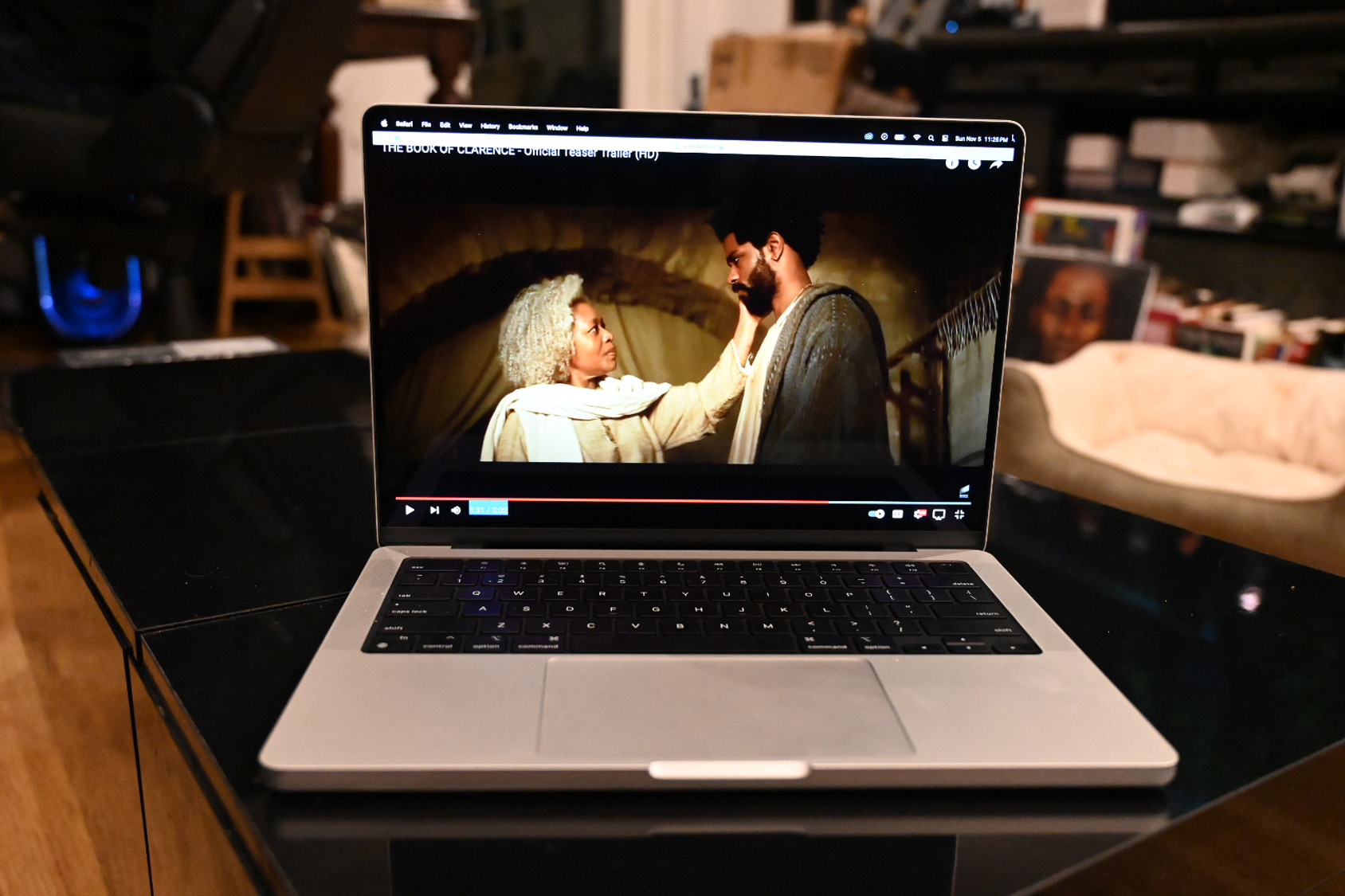
As neither the HP EliteBook Ultra nor the Apple MacBook Pro 14 M3 have OLED display panels, they aren't the most vibrant displays we've ever seen. However, both should be sufficient for most uses.
The EliteBook's glossy panel IPS display covered 84.7% of the DCI-P3 color gamut with an accuracy of 0.22. The MacBook Pro's Super Retina gloss panel covered 81.3% of the DCI-P3 color gamut with an accuracy of 0.12. So the EliteBook is a bit more vibrant, while the MacBook Pro is a bit more accurate, though those differences aren't enough to make a huge visual difference. It's also a rather balanced trade-off.
In terms of brightness, the two have a much clearer disparity. The EliteBook hit an average maximum brightness of 321 nits, while the MacBook Pro hit an average peak brightness of 558 nits. So the MacBook is a bit better for fighting glare and has a slight advantage to the eye because whites pop a bit more on the MacBook display.
Because of its higher brightness, we'll go with the MacBook Pro as the winner for this category.
Winner: Apple MacBook Pro 14 M3
HP EliteBook Ultra vs Apple MacBook Pro 14 M3: Performance
When it comes to performance, both the EliteBook Ultra and the MacBook Pro will handle anything from light photo and video editing to web browsing to video streaming.
So no matter what you need to handle, both laptops can keep up. Unless you're in the market for a dedicated workstation or gaming machine, but as far as versatile thin and light laptops go, both the EliteBook Ultra and MacBook Pro are good choices.
Our benchmarks even back it up. On Geekbench 6, the EliteBook Ultra had the lead in multicore performance with an average of 12,717 while the MacBook Pro averaged just 11,968. But the MacBook Pro had the advantage in single-core performance with an average of 3,163 compared to the EliteBook Ultra's 2,371 average.
No matter what you need to handle, both laptops can keep up.
On the Handbrake video encoding test, which converts the 4K version of Tears of Steel into a 1080p 30 FPS format, the MacBook Pro was about a minute quicker, with a time of 5:38, compared to the EliteBook Ultra's 6:40.
While the MacBook Pro does have an advantage in single-core performance and was a minute faster on Handbrake, single-core performance is mostly leveraged in specific photo and video editing tasks.
Meanwhile, multicore performance is more reflective of what the average person needs out of a laptop. Though having good video encoding speeds is handy, it isn't an essential metric for most people. So, this one does feel like a proper draw.
Winner: Draw
HP EliteBook Ultra vs Apple MacBook Pro 14 M3: Gaming and graphics
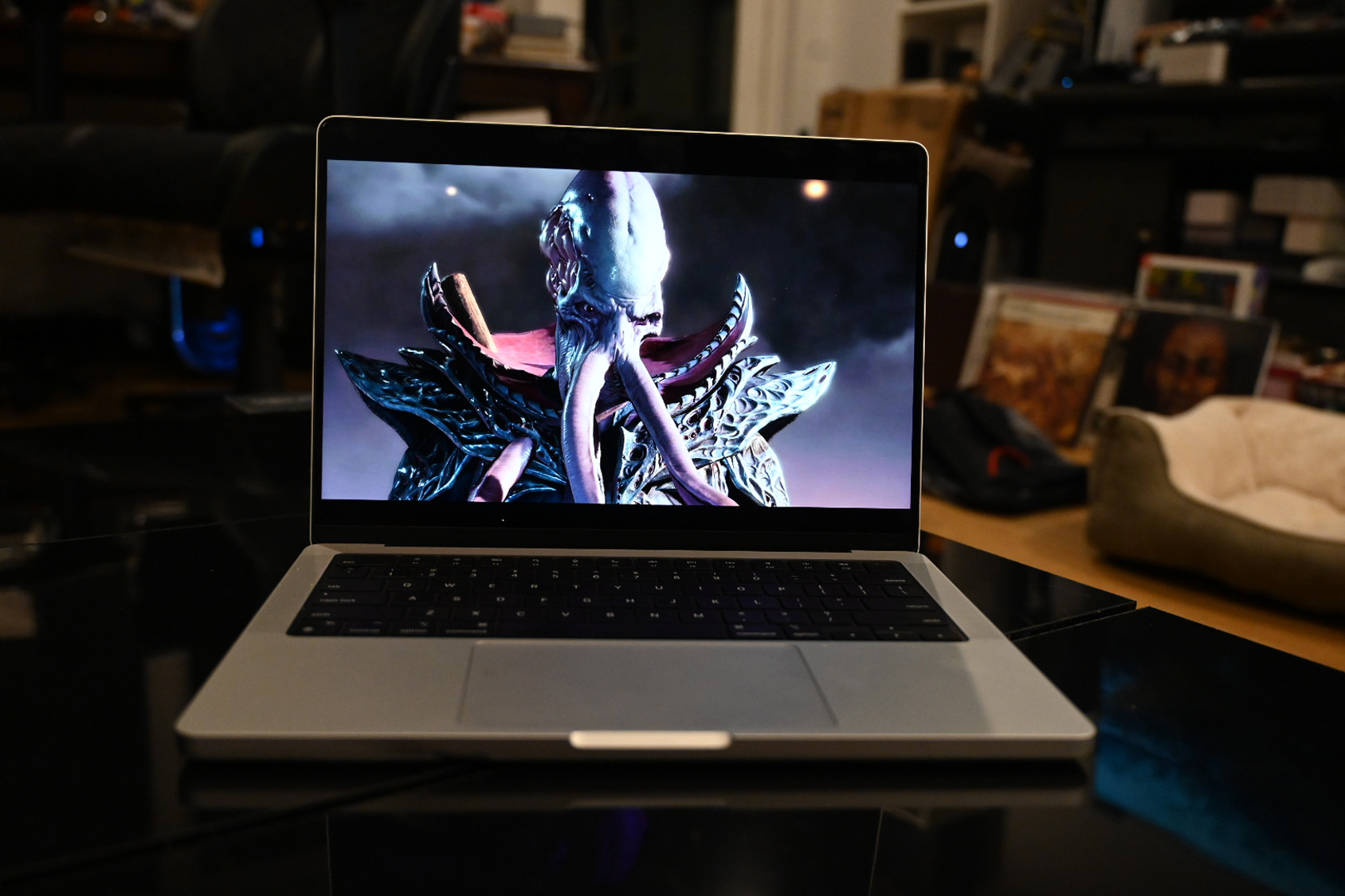
The M-series chipsets marked the first time gaming had seemed viable on a MacBook in years, and that trend holds through to the M3 generation.
The MacBook Pro 14 M3 may have a limited game library compared to the HP EliteBook Ultra, but the games it does have run natively on the Metal API, while the EliteBook has to rely on emulation to mimic Windows x86 and Microsoft Direct X or Vulcan API runtimes.
So if you're looking at a game that's available on both platforms, it will perform better on the MacBook Pro. To confirm that, we tested both laptops on Sid Mieier's Civilization VI: Gathering Storm graphics benchmark at medium settings and 1080p resolution.
If you're looking at a game that's available on both platforms, it will perform better on the MacBook Pro.
While the HP EliteBook Ultra managed a fair 20 FPS average, the MacBook Pro 14 had a 51 FPS average across three runs. That 31-frame-per-second lead is nothing to scoff at. Even if Civ VI is a more CPU-heavy game than most.
The MacBook's gaming superiority is further supported by the two laptops' 3DMark Wild Life Extreme Unlimited scores. The HP EliteBook Ultra had an average score of 6,043 and a frame-rate average of 36.2 FPS. The MacBook Pro 14 M3 had an average score of 8,297 and a frame-rate average of 49.7.
Winner: Apple MacBook Pro 14 M3
HP EliteBook Ultra vs Apple MacBook Pro 14 M3: Battery life
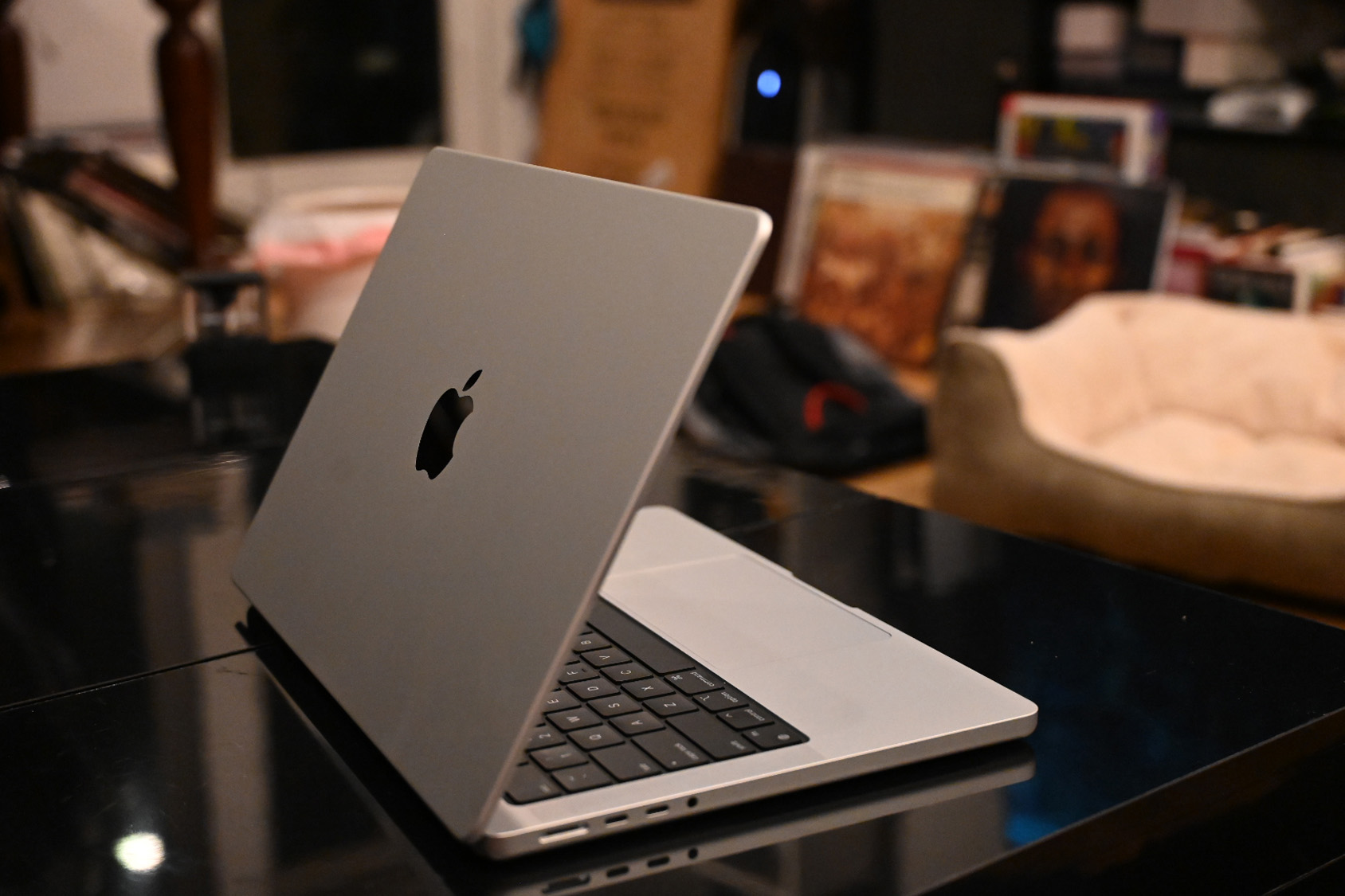
This one is rather straightforward as both laptops were tested on the Laptop Mag battery test which sets a laptop to 150 nits of brightness and has it cycle through a series of static, multimedia, and video webpages until it dies.
The MacBook Pro 14 M3 lasted an impressive 17 hours and 16 minutes, which is over an hour longer than the HP EliteBook Ultra's 16:01 battery life.
While those numbers may vary depending on how you use a laptop, being ultra-thin laptops with cooling fans, our battery test is a nearly perfect comparison. So the MacBook Pro is the clear winner.
Winner: Apple MacBook Pro 14 M3
Bottom line
In many MacBook and Windows laptop comparisons, the real deciding factor is the operating system. For all that the hardware may or may not match up, a MacBook has a wildly different OS and applications that may need to run through emulation software.
Except for the Copilot+ PCs powered by Qualcomm's new ARM chipset. For all the work Qualcomm and Microsoft put into making sure every application you may need runs natively on the laptops, some things will still require emulation.
Others will eventually be native for Windows on ARM but have yet to be released. So, for once, we have a Windows and Mac comparison that is a bit more equal. You still have the operating system differences, but those aren't insurmountable.
That said, the MacBook Pro 14 M3 does still have a slight edge on battery life, gaming, and display quality. Both laptops are similarly thin and light, have similar performance, and battery life that will last more than a full workday. But it will, of course, depend on your individual needs and preferences.

A former lab gremlin for Tom's Guide, Laptop Mag, Tom's Hardware, and TechRadar; Madeline has escaped the labs to join Laptop Mag as a Staff Writer. With over a decade of experience writing about tech and gaming, she may actually know a thing or two. Sometimes. When she isn't writing about the latest laptops and AI software, Madeline likes to throw herself into the ocean as a PADI scuba diving instructor and underwater photography enthusiast.
